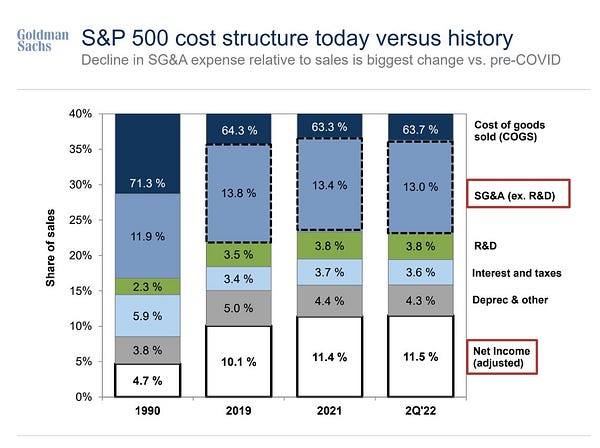How Tesla (and other automakers) can hit Biden’s ambitious EV goal
Spoiler alert: spend lots of money.
Good morning, investors!
If this is your first time with us, don’t forget to subscribe here. If you enjoy today’s issue, please hit the heart button at the end of the report.
Without further ado…
Let’s start the day with another pop quiz. (No science questions this time.)
Pop quiz: What percentage of vehicle sales belonged to EVs in 2021? *Bonus points if you can guess 2022’s early estimates*
About a year and a half ago, the Biden administration set a bold target for electric vehicles: a 50% share of total car sales by 2030. At first glance, that feels pretty ambitious, considering EVs represented only 5% of vehicle sales in 2021 and early estimates peg 2022’s figure at 5.8%, according to Cox Automotive (EV data; total data).
But a basic eye test would tell us that a tenfold increase isn’t impossible. As we mentioned in a prior issue of DD, the 5% milestone is a big one. If the US demand curve follows in the footsteps of other countries that have surpassed this threshold, EVs would be on pace to hit 25% of new car sales by 2025. (Although a recession would certainly disrupt that timeline.)
More importantly, the US government has committed to reducing reliance on China by encouraging the development of domestic supply chains via multi-billion-dollar infrastructure investments and incentives, which includes the auto industry.
And the private sector has followed suit. Per a recent Reuter’s study:
The world's top automakers are planning to spend nearly $1.2 trillion through 2030 to develop and produce millions of electric vehicles, along with the batteries and raw materials to support that production.
Tesla, today’s EV market share leader, wants to ensure it holds onto this title, gunning for a staggering 20 million EV sales in 2030. For comparison, Tesla delivered 1.31 million vehicles in 2022.
While Tesla hasn’t outlined spending plans, Reuters estimates this level of production would cost $600 billion to achieve, as the automaker would need several more assembly plants and battery factories.
But Tesla isn’t the only automaker pouring capital into EV expansion. Let’s look at the rest of the field’s impending spending sprees as well as who they’re partnering with for solid-state batteries. (If you missed last week’s issue on solid-state batteries, you can check it out here.)
Volkswagen: $100 billion (solid-state battery investment: QuantumScape)
Toyota: $70 billion (Prime Planet Energy & Solutions)
Ford: $50 billion (Solid Power)
Mercedes: $47 billion (Factorial Energy)
Honda: $40 billion (Solid Energy Systems)
BMW: $35 billion (Solid Power)
Stellantis: $35 billion (Factorial Energy)
GM: $35 billion (Solid Energy Systems)
Hyundai: $16 billion (Solid Energy Systems and Factorial Energy)
It’s difficult to predict the outcome of a multi-year race, but our guiding principle may hold true in determining the winner: follow the money.
Three Eye-Opening Tweets
And finally, we close with three eye-opening tweets.
Fascinating.
Lots of buy orders for Tesla stock, perhaps too many (see thread).


Software and automation have their perks.
Thanks for reading. Don’t forget to hit the heart button if you enjoyed today’s report.
If you haven’t subscribed already, you can do so here.








50% is indeed ambitious. Enjoying the articles, keep up the great work.